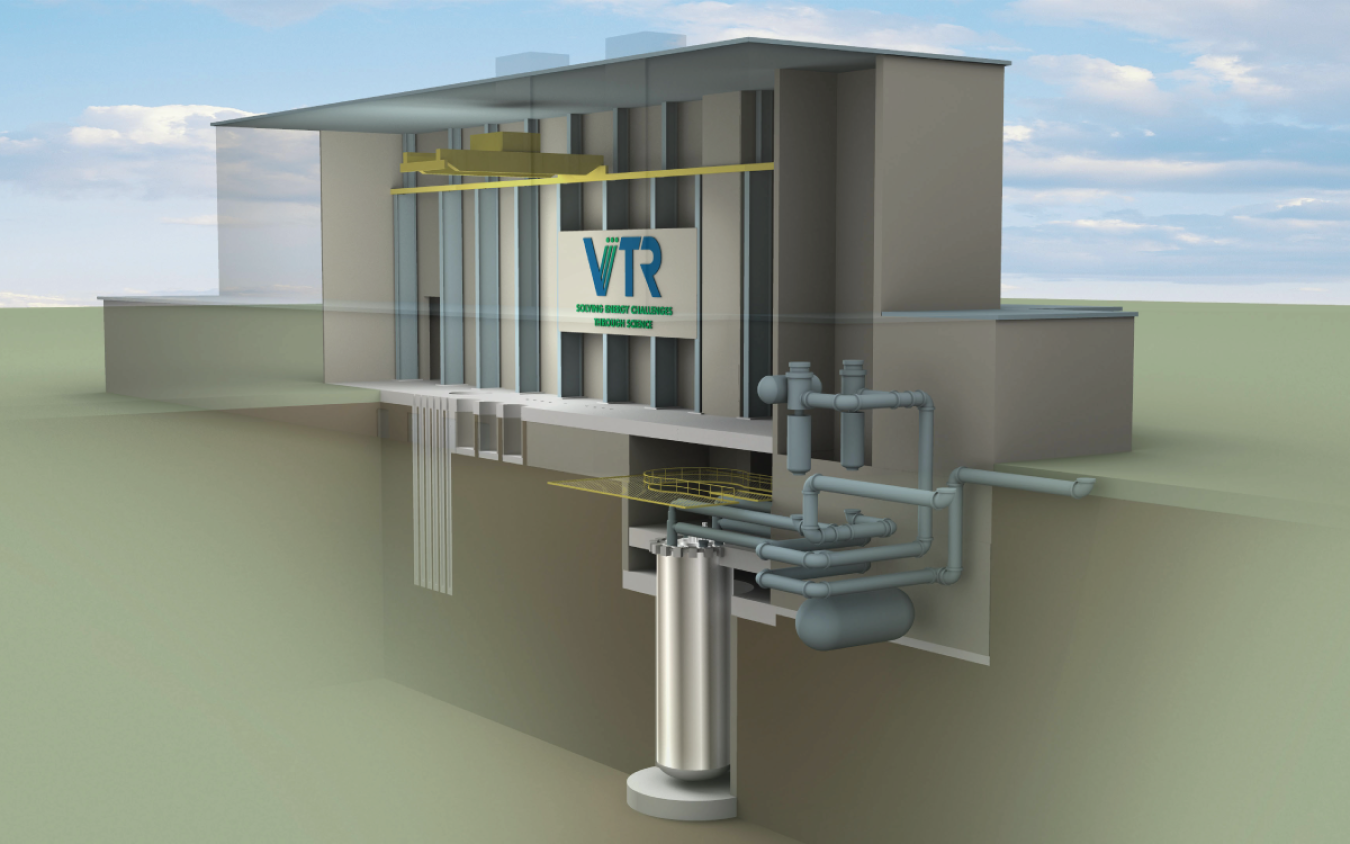
In February 2019, the U.S. Department of Energy (DOE) announced its plans to build a Versatile Test Reactor, or VTR. Once built, the research community will be able to leverage VTR’s high neutron flux to test nuclear materials 10 times faster than what is currently capable today.
VTR will:
- Modernize DOE’s essential nuclear energy research and development infrastructure.
- Accelerate the development of advanced nuclear fuels, materials, instrumentation, and sensors.
- Reestablish the United States as a global leader in nuclear science and innovation.
- Support the nation’s goal of reaching net-zero carbon emissions by 2050.
The VTR project is led by Idaho National Laboratory in partnership with five national laboratories (Argonne, Los Alamos, Oak Ridge, Pacific Northwest, and Savannah River) and includes a host of industry and university partners.
Why Do We Need a Versatile Test Reactor?
Pending Congressional appropriations, VTR will be the nation’s only high flux, fast neutron test reactor. This advanced fission environment will help the U.S. establish a rapid pace of nuclear innovation to support all stages of technology development for both current and advanced reactor technologies.
Record of Decision
On July 27, 2022, DOE issued a Record of Decision (ROD) for the Final VTR Environmental Impact Statement (EIS) to document its decision to build VTR at Idaho National Laboratory (INL). The ROD also includes the establishment of co-located facilities for the post-irradiation examination of test products and management of spent VTR driver fuel. According to the Final VTR EIS, building and operating VTR at the INL site would have minimal impacts to the environment.

Record of Decision
With the VTR ROD, DOE will work with Congress per its authorization in the Energy Act of 2020, included in the Consolidated Appropriations Act (Pub. L. 116-68), to obtain the funding needed to execute VTR. The project will be implemented in accordance with the rigorous methodology established by DOE Order 413.3B, Program and Project Management for the Acquisition of Capital Assets.
Videos
- Versatile Test Reactor - Solving Energy Challenges Through Science
- Versatile Test Reactor Vital to Keeping United States' Leadership Position in the Nuclear Industry
- The Versatile Test Reactor is Critical for Research and Development of Advanced Nuclear Reactors
- The Versatile Test Reactor Sets the Stage for Future Nuclear Development
- Looking to the Future with Important Testing Technology - The Versatile Test Reactor
- The Race to Decarbonize: The Versatile Test Reactor’s Role in Realizing Our Clean Energy Future
- Why VTR is Important for the U.S. and the World's Energy Future
- Clean Energy and Nuclear Innovation: The Case for the Versatile Test Reactor (VTR)
- VTR and the Benefits of Advanced Nuclear Test Reactors
- How VTR's Unique Testing Capabilities Will Advance Nuclear Technology
- How Do We Get to a Carbon-Free-Energy Future?
- VTR Experimental Capabilities: Technical Overview
- How VTR Advances Nuclear Science and Technology
- How VTR Promotes International Safety
- VTR's Role in Designing, Testing and Advancing Materials
- VTR's Role in Meeting the World's Clean-Energy Demand and U.S. Nuclear Leadership
- Why VTR and Nuclear Technology is Important to the World's Energy Future
- Why VTR is Key to the Future of Nuclear Technology and Clean Energy
- How VTR is Key to Finding Clean, Renewable Energy Solutions
- How VTR Advances Safe, Carbon-Free Energy Solutions

